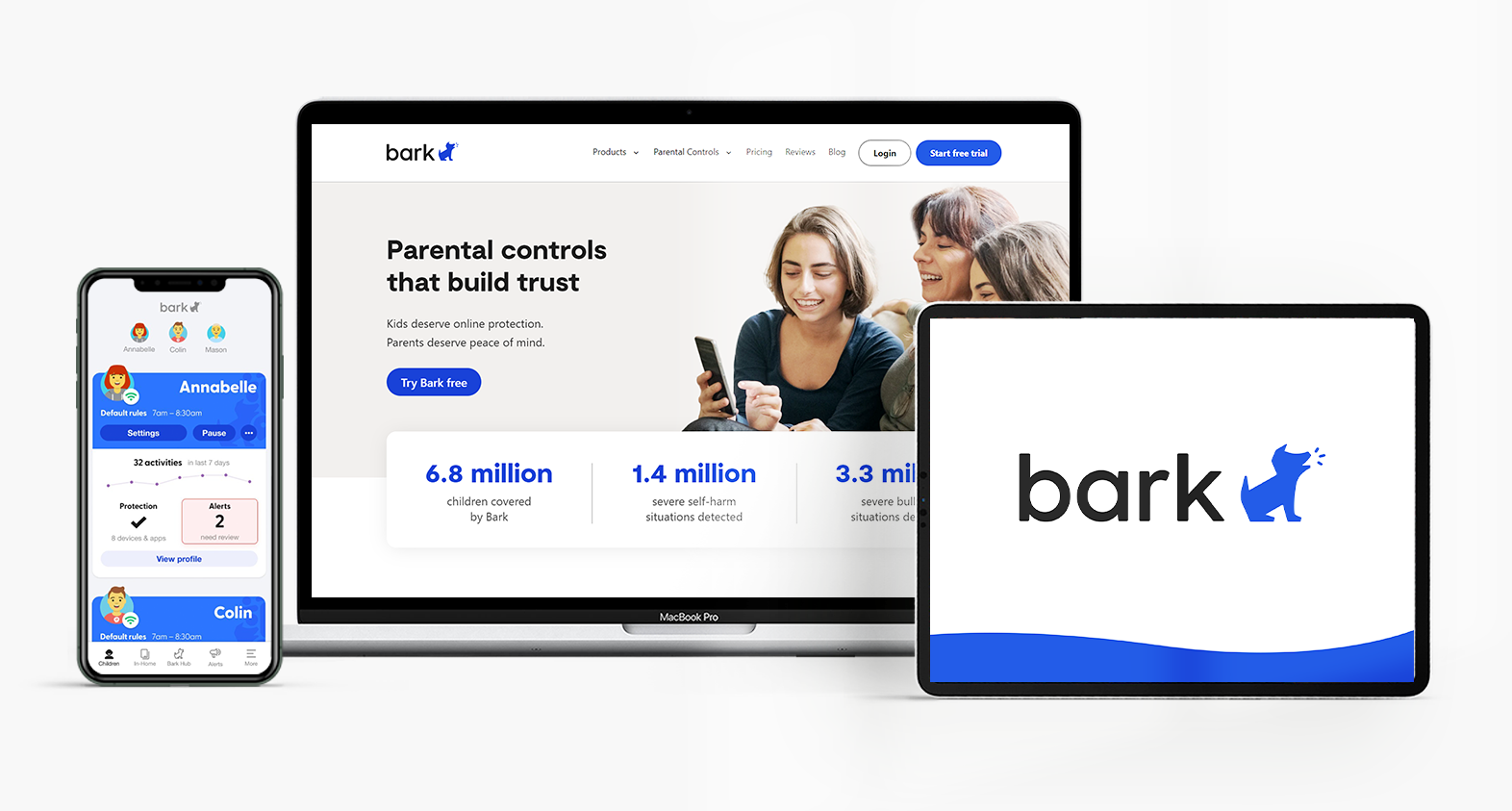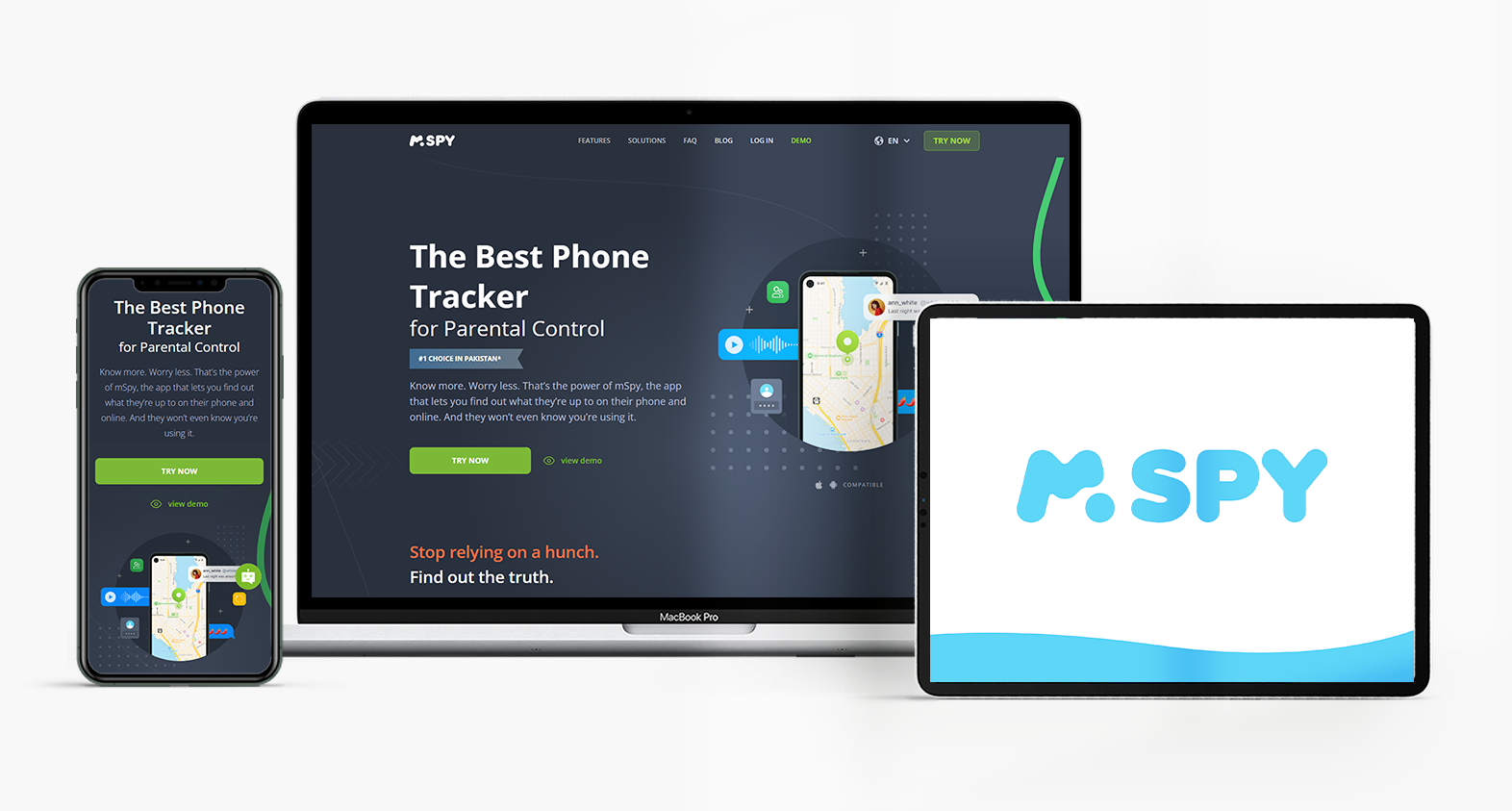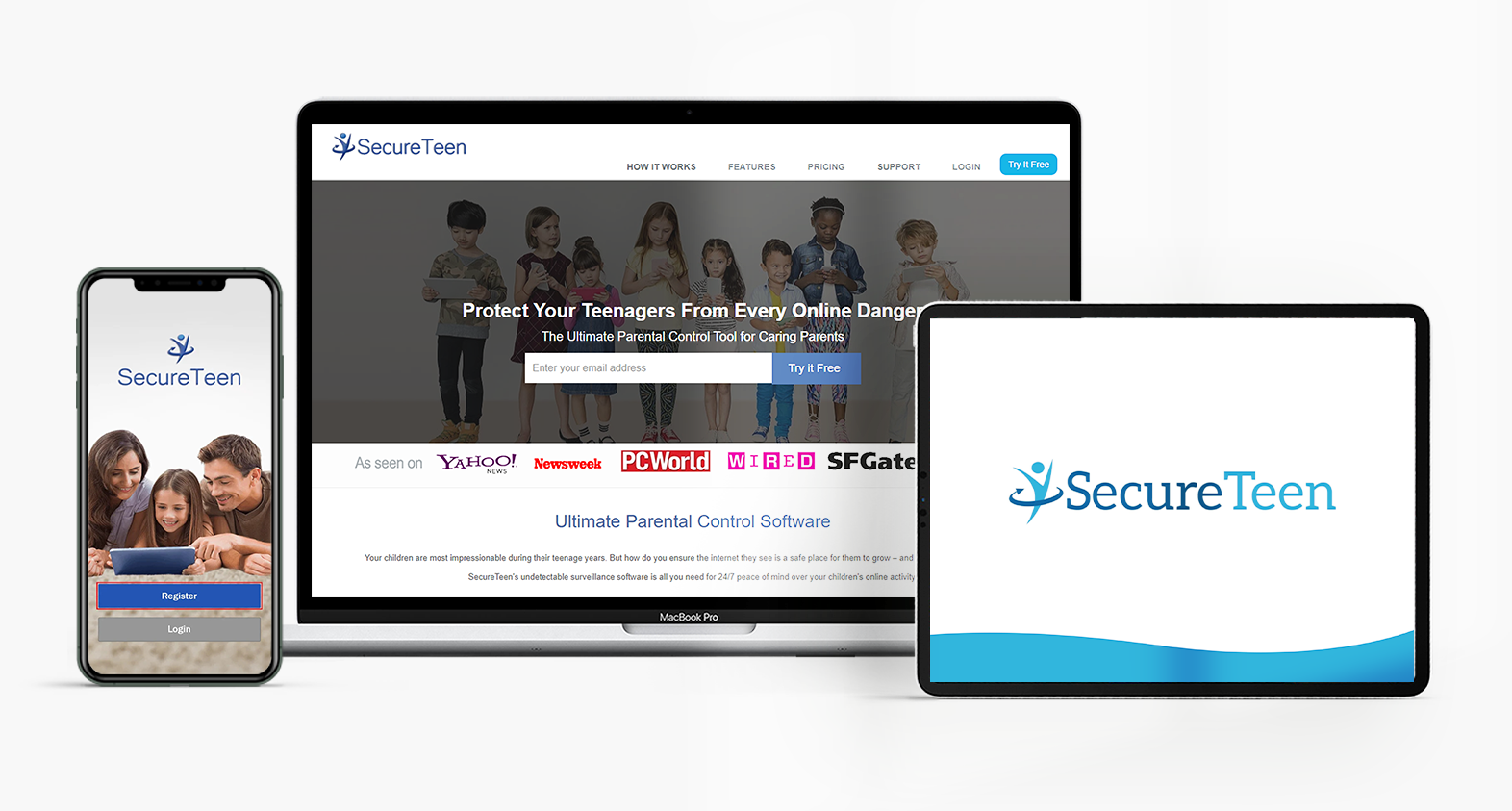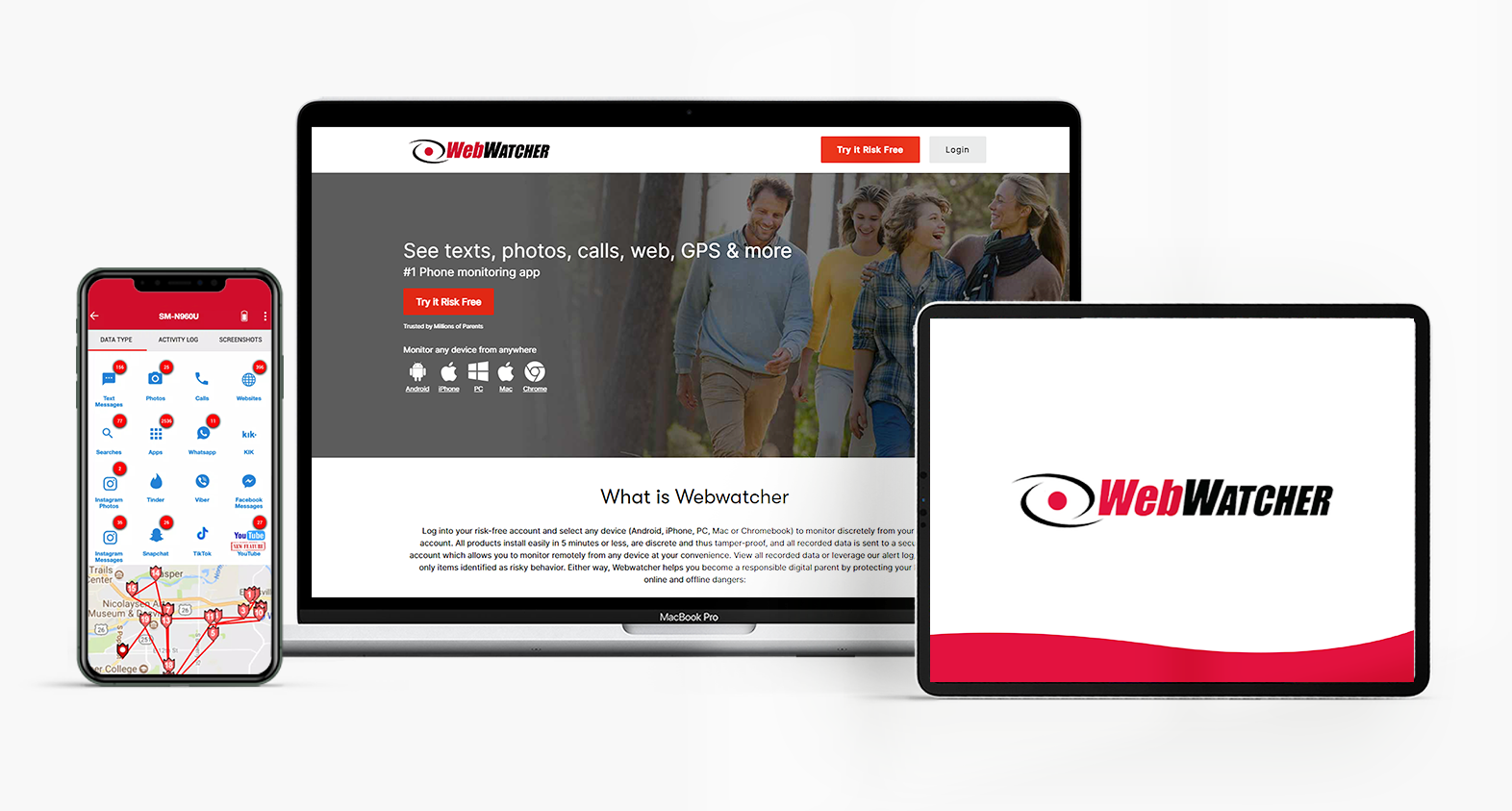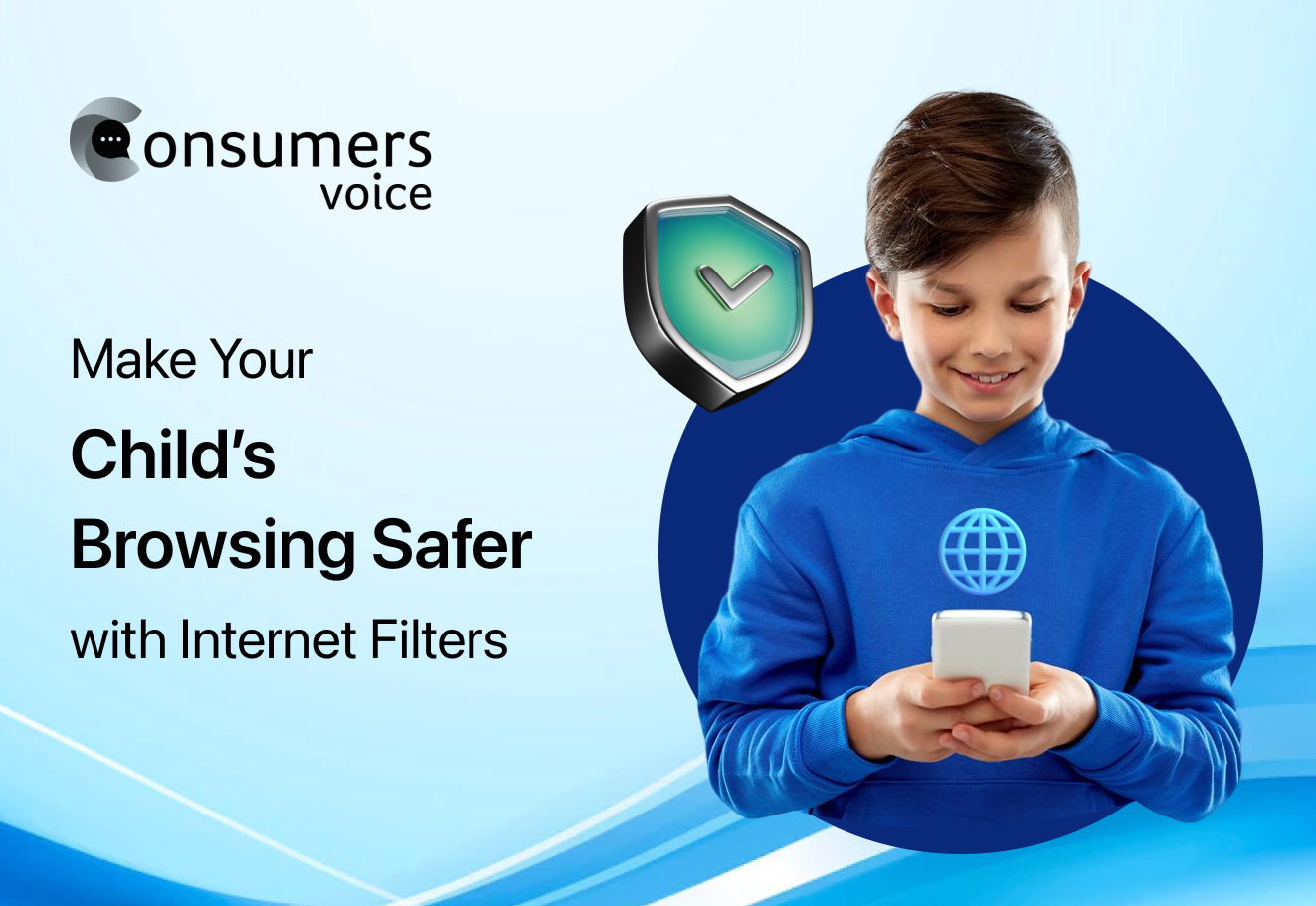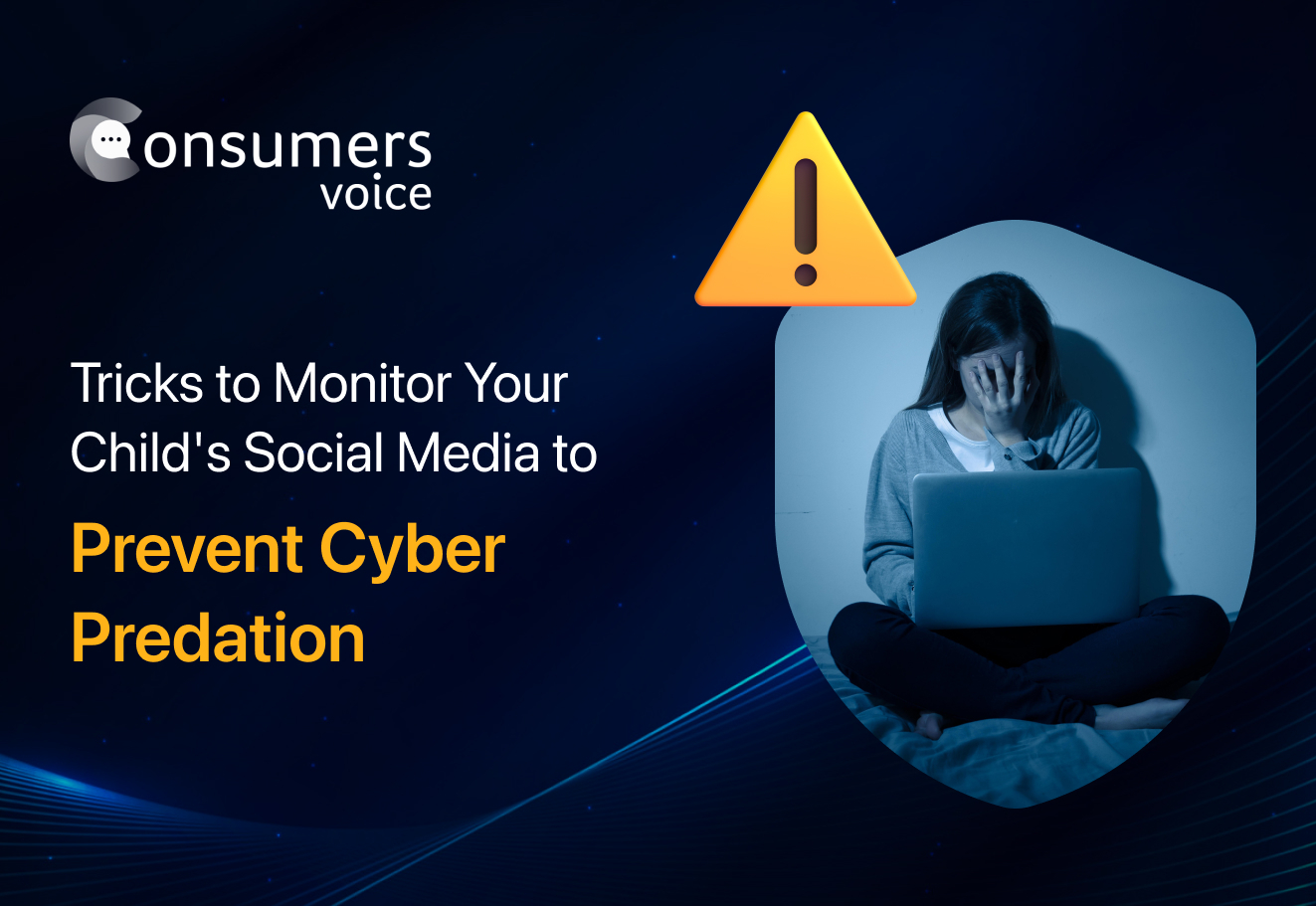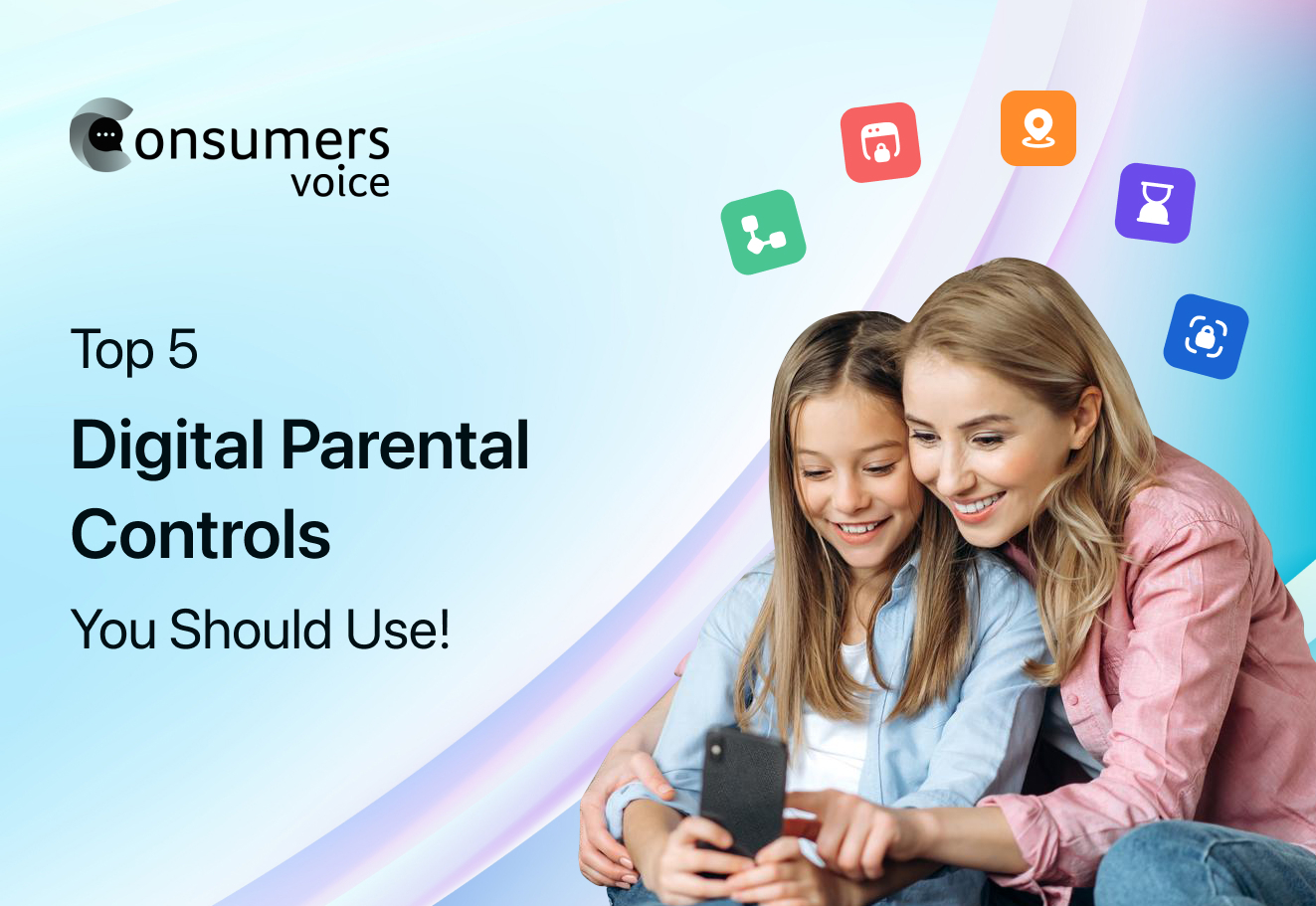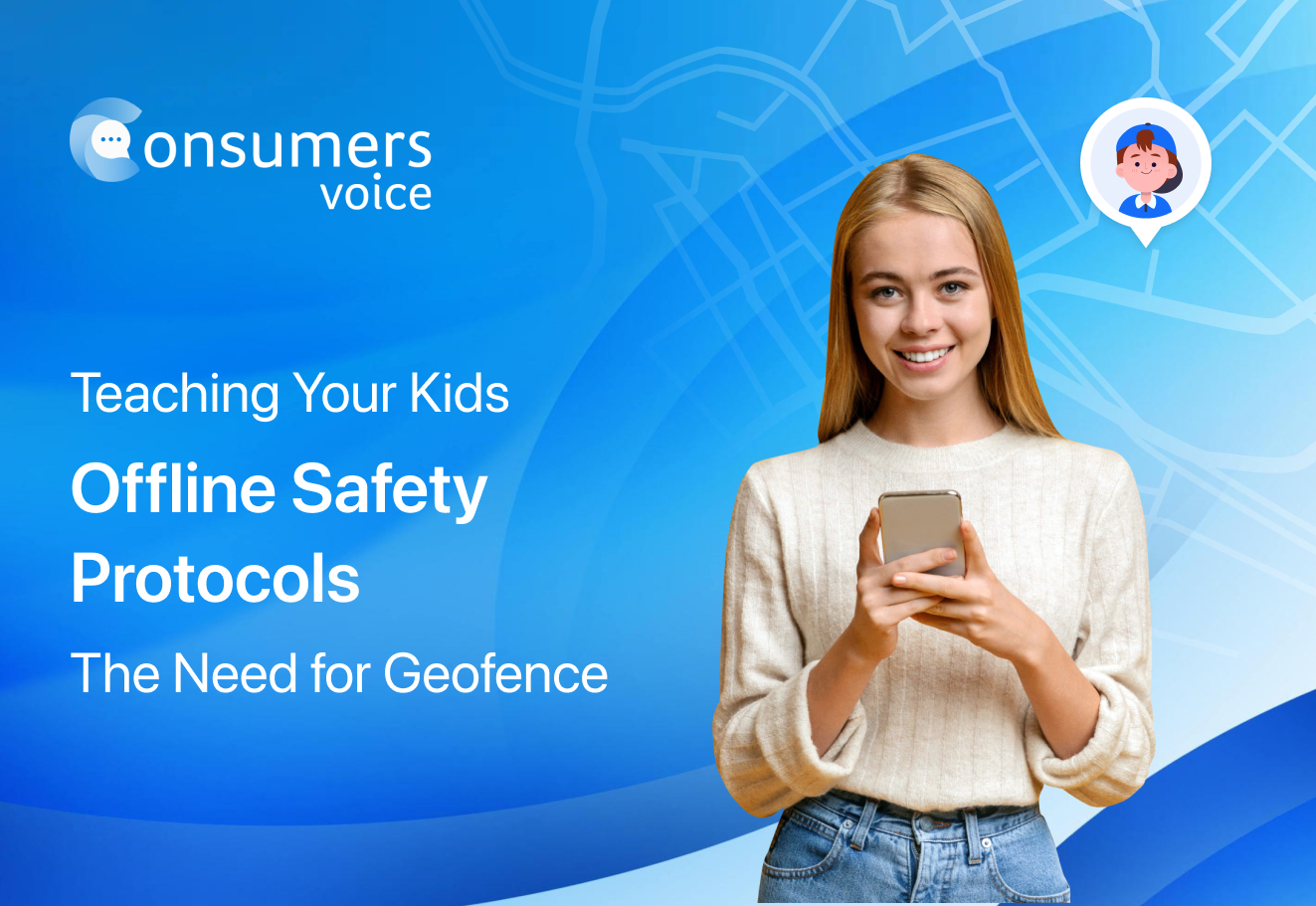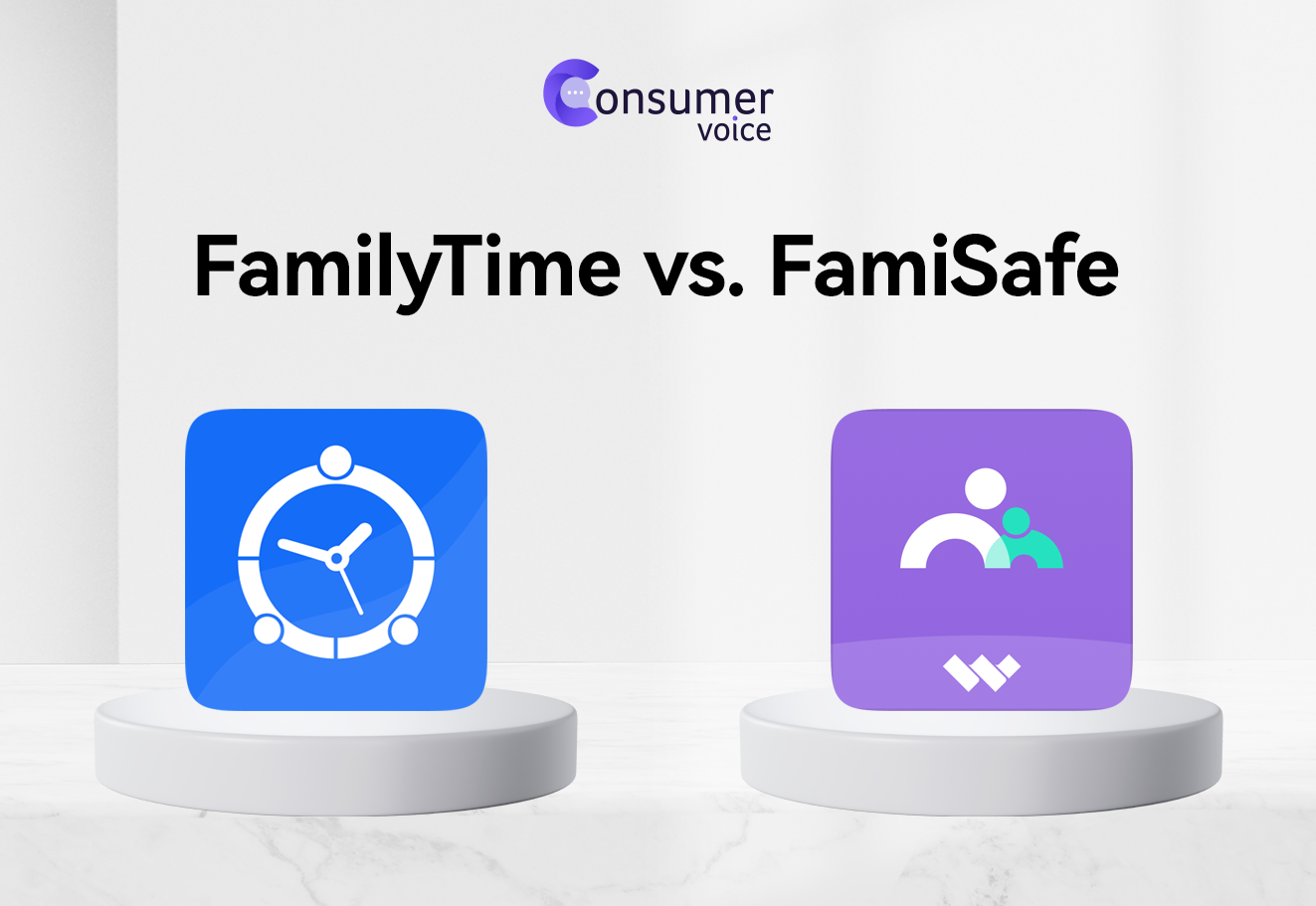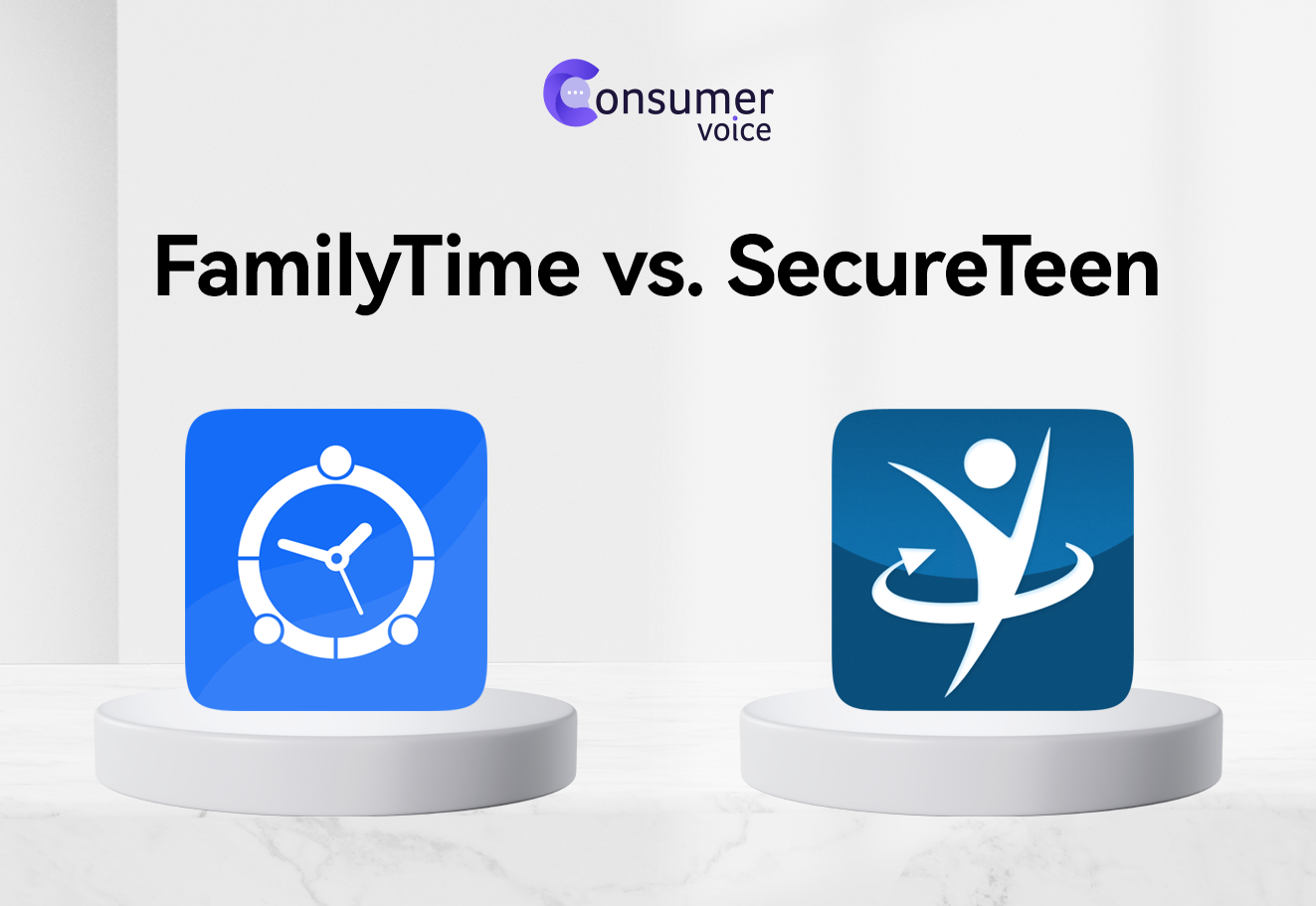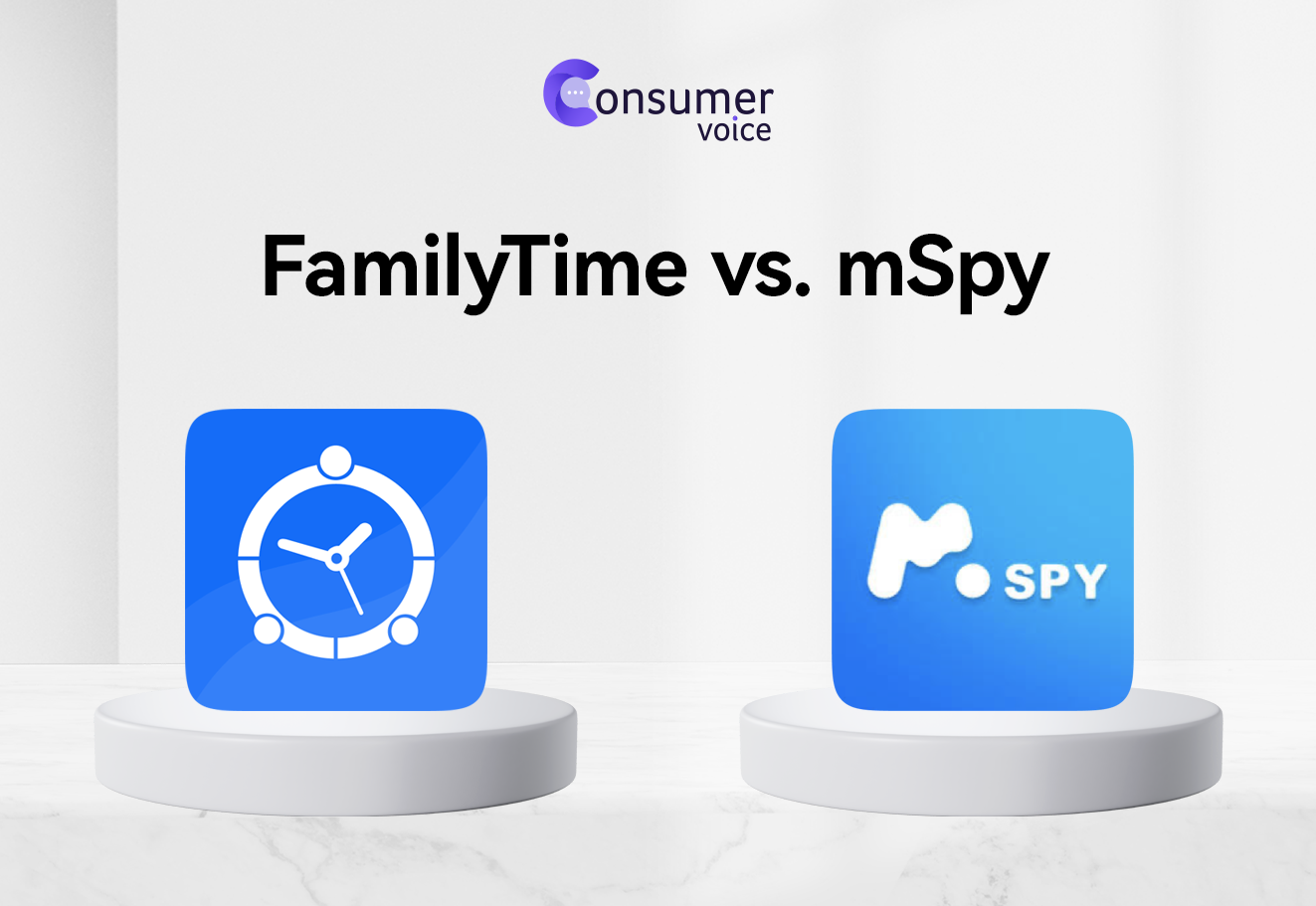OUR TOP RATED APPS
FamilyTime
Qustodio
Mobicip
Bark
Norton Family
Best Parental Controls 2024 – Top Parental Control Apps Updated!
As the new year arrived on our calendars, I gave myself the task of reviewing and updating my list of the best parental controls for 2024. Since we are living in the era of IT transformation, every day poses a challenge for parents to protect their children from the negatives of technology.
So far, parental control apps have been our friends. It’s time to have hands-on experience with these apps and find out which one is still performing the best. Thankfully, this time, I did not have to review a huge number of apps to find the best one. Instead, I precisely evaluated the performance, features, and adaptability of the best parental control apps previously on the list.
Along with the leading names of digital parenting apps, I checked a few new options and added them to the list for reference. Unfortunately, none of the latest parental control apps made it to the top 10 list.
Top 10 Parental Control Apps for Android & iOS in 2024
If you are a digital parent like me and looking for the best parental control app in 2024, I’ve got you covered. I have re-used, tested, and reviewed the parental apps listed below to provide you with clear guidance in selecting the right one. All of these are popular apps for parental controls, so knowing their hands-on experience is worth it.
FamilyTime – The Best Parental Control App for Smartphones

| What’s Hot? | What’s Not? |
| Advanced parenting features | Call & SMS monitoring only available for Android |
| Web blocker for extensive content filter | Teen Safe Drive is an iOS supported feature |
| App approval restrictions on new installs | |
| Good to set individual App Limits | |
| Multiple device limit plans | |
| Interactive child app interface | |
| Free trial available | |
| 24/7 customer support |
On my quest for the best parenting app, I found FamilyTime as my go-to option to keep my kids safe and monitor what they are doing in their digital world. Throughout the year, it has been my favorite, and I have explored the app much more than just a trial.
Not only do I love the app, but my kids also love it because they have the freedom to use their TimeBank whenever they need. Additionally, my kids have made responsible use of SOS and PickMeUp alerts, which helped a lot in keeping them safe and always available when needed.
Parenting features like screen time limits, app blockers, Safe Search, Location Tracking, and Geofencing have been my favorite. I find them really helpful. Another amazing feature I explored was co-parenting.
Although it’s considered to be used by separated couples, it’s equally beneficial for parents at a distance. Whenever I was not available, my partner was available for my kids to look after their digital routine.
Getting daily stats to the weekly and monthly reports is as simple as it can be. The app provides a detailed overview of my child’s app and device usage stats that help me make use of other tools. I derived new rules following the report’s data, and it helped a lot in directing my child towards a better digital stream.
Addictive New Features
In 2023, FamilyTime added a number of features to the parental toolkit that made things a lot easier for me. The major features were Approve Apps, Individual App Limits, Low Battery Alerts, Web Blocker, and Social Media monitoring.
Although all of these features were good, Individual App Limit is my favorite. I was able to set up specific screen time limits for each app that my kids use frequently. It helped them have a well-distributed screen time. Plus, the other features were good to put a stop to unwanted app installations, access to explicit websites, and prevent drained batteries.
The new apps added to social media monitoring were Bip, Signal, Twitch, Instagram, WhatsApp, and more. I could see the chats of my kids to know what they are doing online. In addition to the new features, the FamilyTime Jr. app is reborn. With an all new look and interactive design, it’s more kid friendly. My children could access the alert buttons right on screen now and navigate through the app to review their TimeBank or FunTime minutes.
Pricing Plans
FamilyTime has always been affordable, and that’s why I love the app among the rest. There is a wide range of plans for you to select from, such as MyFamily to MyFamily5. One thing I observed is a slight increase in their pricing for 2024 due to recent inflation. However, compared to other apps, their prices are still quite affordable, considering the features they are offering.
My Stance
I have personally kept FamilyTime at the top of the list, knowing that it’s the best of all time. The app has amazing parental tools to ensure a child’s digital safety by setting up screen time limits, monitoring social interactions, reviewing locations, and much more. FamilyTime empowers parents to guide their children’s digital lives safely.
FamiSafe – Smart Content & App Monitoring
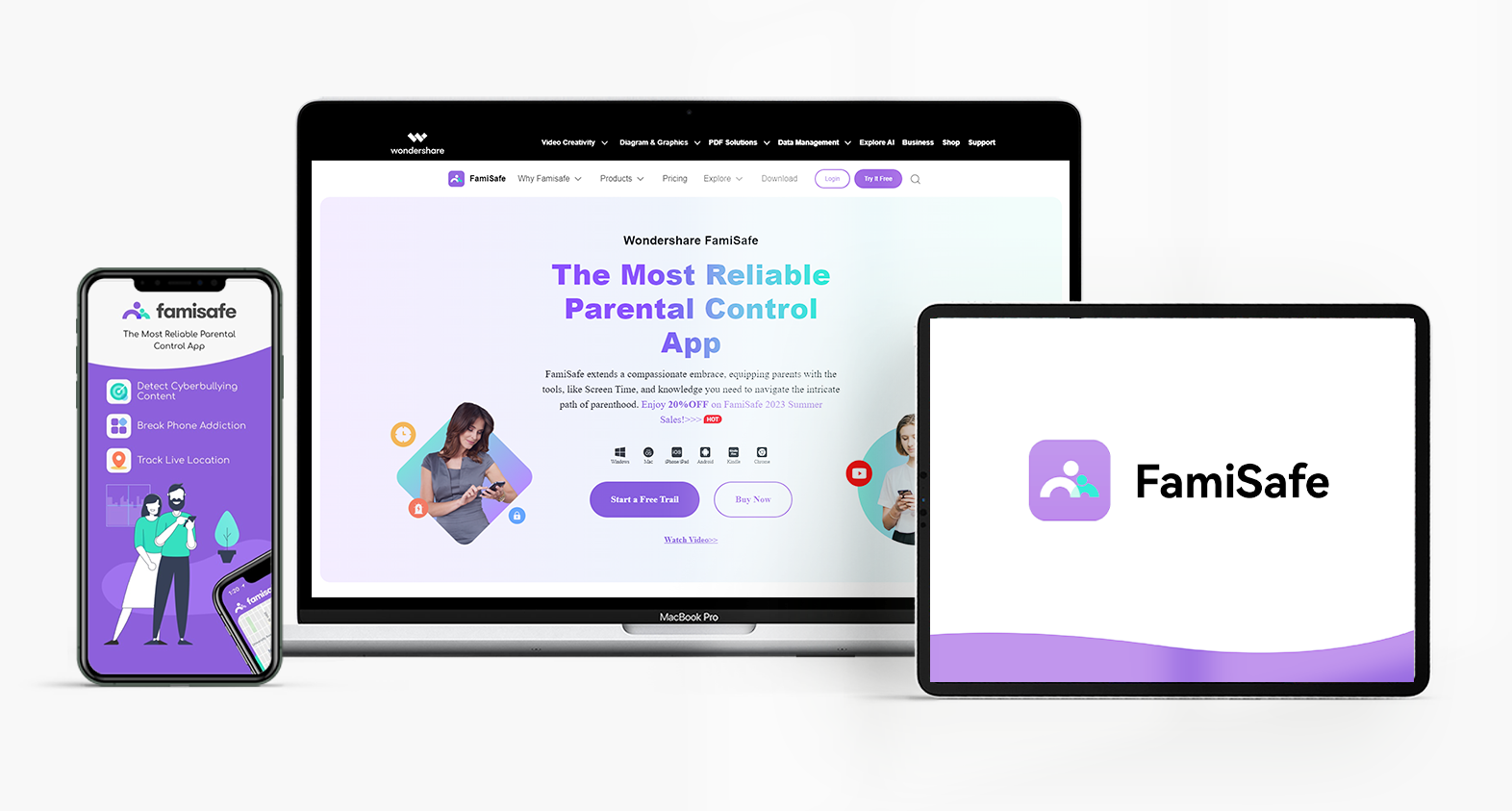
| What Hot? | What’s Not? |
| Reasonable set of parenting features | No new features added to app |
| Suitable for screen time limits | Technical dashboard for parents |
| Real time location tracking enabled | Geeks can bypass filters |
| Extensive default content filters | |
| Free trial available |
FamiSafe always gets some points for its ease of use and the bunch of features its dashboard offers to parents. My recent FamiSafe review experience was good, as the app’s screen time control and app usage features are excellent. They help me set healthy limits for my kids’ digital time, blocking or restricting apps during homework or bedtime. The web content filtering option has its regular 21 default categories that are great for blocking inappropriate content. The app also offers web history to keep me in the loop about my children’s online activities.
One cool feature is real-time location tracking. I can see where my kids are and set safe zones with geofencing for instant alerts when they enter or leave those areas. It’s like having a virtual guardian angel.
Areas of Concern
Among the downsides, FamiSafe did work on its proofing, but kids could still bypass content filters on sites like YouTube and Reddit. Contacting support for assistance is daunting, as the process seemed a bit complicated. The app’s dashboard is a bit technical, making it a bit tricky for parents.
Exploring Pricing Plans
Talking about the pricing, FamiSafe offers reasonable plans. There’s a monthly plan for $9.99, a Quarterly Plan for $19.99 (around $6.66 per month), and an Annual Plan for $59.99 (around $4.99 per month). You can try it out with a three-day free trial before making a commitment.
My Stance
Despite the cool features and downsides, I upgraded the rank of the app for certain reasons. It does have stability and a bit of improvement that makes it a good choice. However, there is a need for some stable improvements to keep kids away from bypassing the controls. Overall, it’s a good app to use for your child’s digital safety.
Qustodio – Ultimate Web Filters & Device Monitoring
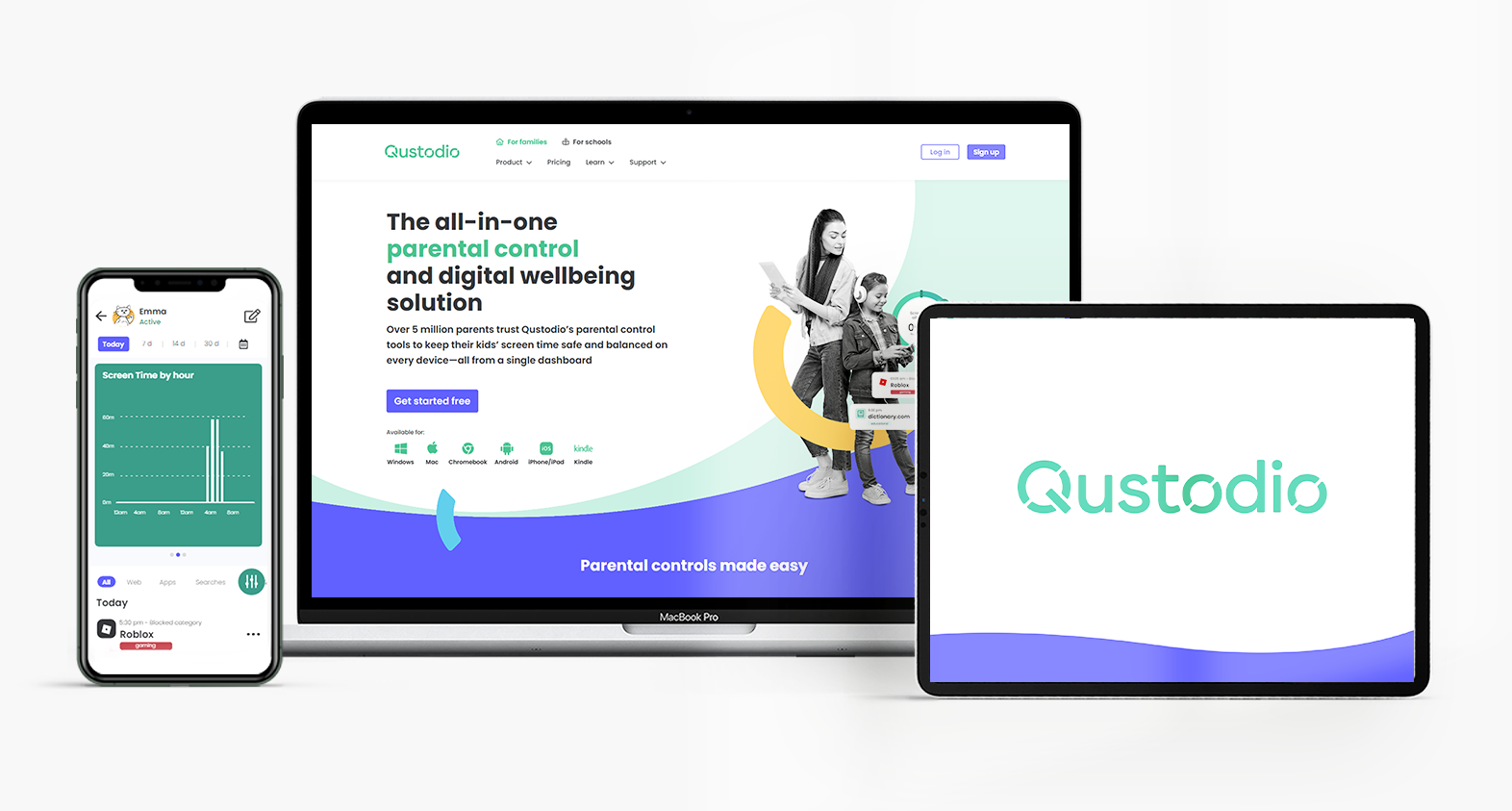
| What Hot? | What’s Not? |
| Smart content screening | Now limited pricing options |
| Detailed usage reports | Quite expensive |
| Emergency alert button for child | Complex installation process |
| Good for bigger families |
Another parental control app I reviewed on my list is Qustodio. It is a fact that I was pretty much impressed with the app’s interface, features and performance. However, previously it was a little pricey for me. In my 2024 top parental control apps list, this one does have a place due to its ability to generate detailed activity reports, filter out inappropriate content, and set screen time limits. Undoubtedly, the app does have all essential and required features necessary to ensure a child’s digital safety.
My Overall Experience
One standout feature for me was the flexibility it offered for different devices. Tailoring rules based on my kids’ age, gender, and interests was a breeze, ensuring a customized and effective approach to their digital safety.
The real-time location tracking provided a comforting sense of security, and the emergency panic button acted as an additional safety net. Managing and reviewing my kids’ digital lives became effortlessly accessible through the user-friendly Dashboard on my device.
In my exploration, the level of detail in the activity reports on the Dashboard stood out. I could track the time spent on each app, the websites visited, and even the frequency of unlocking their devices – a level of insight that proved invaluable.
Challenges with the App
However, I encountered a minor challenge during the installation process, which felt a bit complex. Installing the software on each device initially seemed daunting, but once set up, the experience was smooth sailing.
Pricing Plans
One thing in my latest Qustodio review I explored is the pricing plans have got reduced in numbers. Don’t know whether it’s for good or not, but now things seem a little less complicated for sure. Currently, you can choose between two plans: Basic $54.95 per year and Premium $99.95 per year. The basic plan supports up to 5 devices with a limited number of features. However, in the premium one you can access all features and monitor unlimited devices from a single account.
My Stance
Overall the cost of monitoring your child’s device using Qustodio is higher compared to other options. There are no new added features but there is stability in existing features for sure. It seems a wise choice for you to opt for this one if you have a bigger family and want to monitor multiple devices at a time. But, I am afraid that an unlimited slab will be complex to monitor.
Mobicip – Smart Screen Time Management with Exclusive Controls

|
What Hot? |
What’s Not? |
|
Default setting recommendations |
Limited iOS features |
|
Impressive social media monitoring |
YouTube monitoring lack details |
|
Easy to use dashboard |
|
|
Smart content filters |
|
|
Swift controls |
Previously ranked third, Mobicip is now at the 4th place in the list. This shift is due to some of its competitors making improvements, while Mobicip remains relatively unchanged. The default settings are excellent; you don’t have to do much initially, just input your child’s age, and the dashboard will be in action.
I must highlight the 18 filter categories for the web, which are quite extensive. You can customize by adding websites or app names for systematic monitoring. However, I feel that, given the advanced needs of content filtering, there should be more categories added to the list.
Adjusting daily schedules for school, sleep, dinner, and more was and still is a breeze. I loved how easy it was on the Dashboard. Vacation Mode was a cool find, allowing kids to have more fun during breaks and switching back automatically afterward.
Social media monitoring impressed me. Configuring it with my child’s accounts, I could see updates, connections, and activities. It does provide an extensive look into your child’s digital life, making it even better for you to teach them safe digital practices. Geo-fencing and GPS tracking were blessings, keeping me updated on my child’s location.
A Minor Drawback
Mobicip works with Android and iOS, but some features are only available for Android. Snapchat monitoring isn’t available for iOS, and YouTube content monitoring lacks details. I was expecting that the Mobicip review in 2024 would have these features added for iOS, but that is not the case.
Understanding Pricing Plans
Mobicip offers various subscription plans, starting from $2.99/month for the Basic plan, managing five devices with basic to advanced features. Standard and Premium options at $4.99 and $7.99 monthly cover 5+ devices with advanced features. Try a 7-day free trial without commitment before choosing.
My Stance
For a good and reliable parental control app, Mobicip syncs well with all its features. It has some limitations for devices and features, but the free trial helps you decide if it meets your needs. If you’re seeking a reasonably good choice, Mobicip is worth considering.
Bark – Extensive App Monitoring with Advanced Control Options
| What Hot? | What’s Not? |
| Social media monitoring | No access to full conversation |
| Quick installation | Limit access to child’s activities |
| Mark down threat messages | No screen time limits |
| Free trial available | Too many alerts for parents |
Bark has maintained its stellar performance and user-friendly interface in 2024, making it a reliable choice for parents concerned about their children’s online safety. Just like previous experience the setup process remained a breeze, and within minutes, I was seamlessly connected to my children’s devices.
One aspect that continues to set Bark apart is its extensive monitoring capabilities, covering over 30 social media platforms, emails, and texts. It remains a comprehensive solution, allowing me to keep a close eye on my kids’ digital activities.
The app’s focus on social media monitoring stands out, utilizing a robust algorithm to scan for potential dangers like cyberbullying, adult content, online predators, and more. I appreciate that Bark prioritizes respecting my child’s privacy, only alerting me when it detects potential threats. This approach ensures that I can protect my children without constantly invading their online space.
Few Downsides
However, similar to my previous review, Bark still lacks direct screen time limit controls within the app. Setting screen time limits requires using the built-in controls on my children’s devices, which can be a bit inconvenient. Additionally, the volume of alerts, though indicative of the app’s thorough monitoring, may feel overwhelming for parents, especially if their child is highly active online.
Pricing Plans
In terms of pricing, Bark maintains its two plans: Bark Jr. at $5/month, offering basic features like screen time management, web filtering, and check-ins, and Bark Premium/Sr. at $14/month, including all advanced monitoring features.
My stance
Well, the verdict on Bark is consistent. It’s an excellent value for money, particularly the Bark Premium/Sr. plan, providing comprehensive coverage. The 7-day free trial is still available, allowing users to experience the app before making a commitment.
Norton – AI Supported Web Filters for Content & App Screening
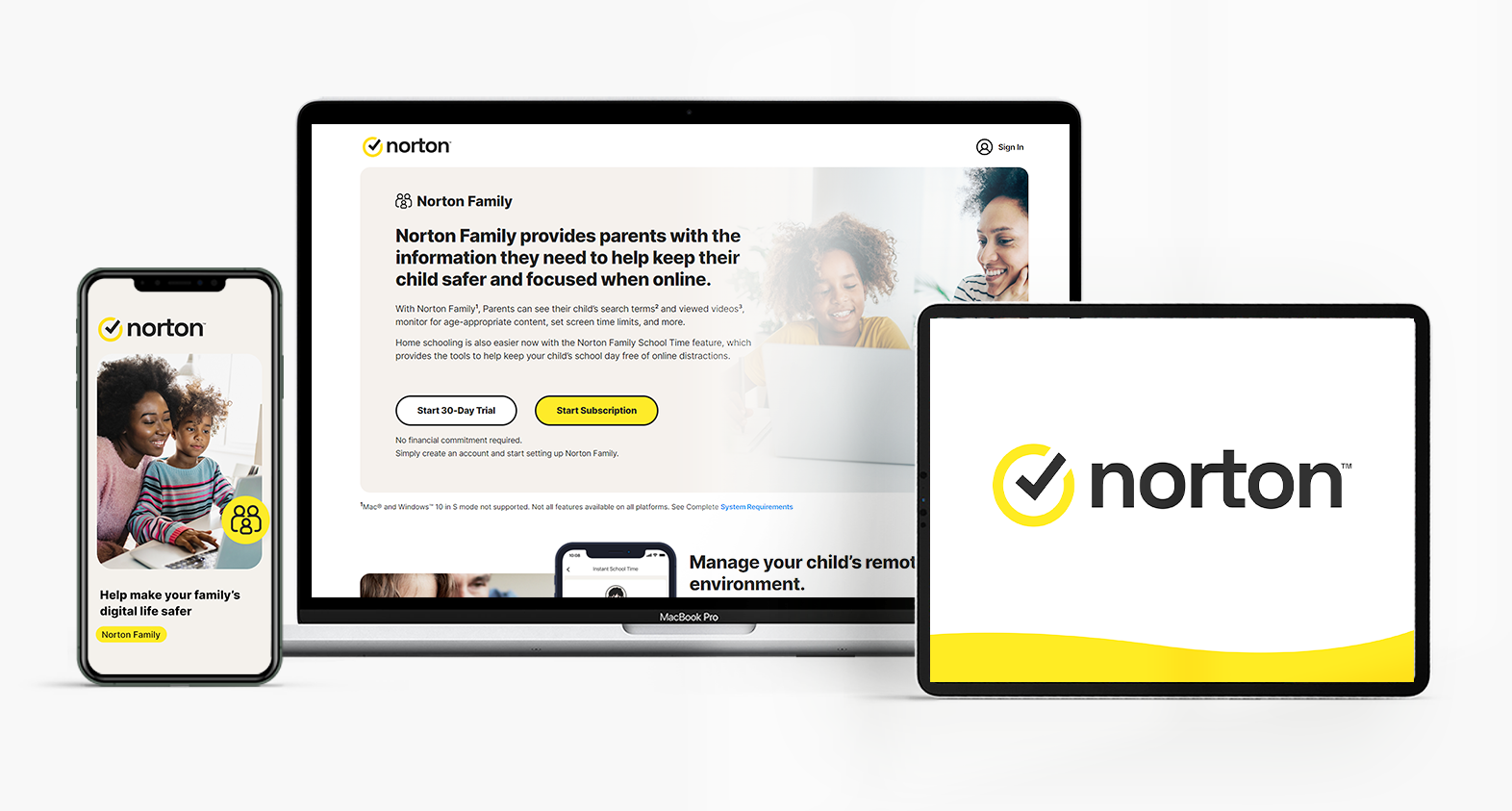
|
What Hot? |
What’s Not? |
|
Smooth monitoring features |
Search monitoring is only compatible with popular browser |
|
Search filters customization |
Not many pricing variations |
|
30-days free trial |
YouTube and Hulu monitoring does not work in apps |
In revisiting Norton Family’s parental control app in 2024, I’m pleased to report that the positive aspects highlighted in my previous review have been maintained, and the recent updates have brought about further improvements.
Norton Family continues to excel in providing comprehensive web filters with 40 different categories, allowing parents to customize filters based on their child’s age or specific needs. The recent update has enhanced the efficiency of the app, and I found the features to work even more smoothly than before. The presets remain compatible with a variety of browsers, ensuring extensive monitoring across diverse factors.
Persistent Limitation
One of the standout features of Norton Family is its ability to track children’s activities even when using private or Incognito mode tabs. It effectively monitors searches and content in those tabs, providing an added layer of security. However, it’s worth noting that this functionality is limited to popular search engines like Google or Bing. If your children use alternatives such as DuckDuckGo or Start Page, the app may not be able to monitor those searches.
I appreciated the YouTube and Hulu monitoring but in the latest event I found, the monitoring only works for the website platforms not the app. In addition, you can only have the updates of the videos your child watched on Youtube.com , not the YouTube embed videos on other sites or blogs.
Pricing Plans
In terms of pricing, Norton Family maintains its single-pricing plan at $49.99 per year, averaging $4.16 per month. While the features offered are reasonable for the price, I did come across some other parental control apps with more advanced features in a similar price range.
My Stance
The user-friendly interface and comfortable dashboard continue to make Norton Family an attractive choice for parents. The 30-day free trial remains a valuable offering, allowing users to access all premium features for free before committing to a paid plan. It provides ample time to thoroughly test the app and make an informed decision.
mSpy – Live Tracking and Easy to Use App
| What Hot? | What’s Not? |
| 24/7 live location tracking | No content screening |
| Extensive calls & SMS monitoring | No screen time limits |
| Instagram, Snapchat, Facebook monitoring | Complex controls |
| Stealth mode for secrecy | No free trial |
Revisiting mSpy in 2024, it’s clear that the app continues to be a reliable monitoring tool, maintaining its focus on providing detailed insights into your child’s digital activities. However, it’s essential to note that mSpy, as indicated in my previous review, isn’t a comprehensive parental control application but excels in monitoring aspects. As it’s shown by its name, the app is good to spy on your child for all good reasons.
The location tracking feature remains a strong point for mSpy, offering 24/7 live updates on your child’s whereabouts. The ability to customize the frequency of location updates is a practical feature, allowing users to avoid unnecessary notifications.
Social media monitoring continues to be a standout feature of mSpy, providing detailed reports on activities across platforms like Facebook, Snapchat, and Instagram. This feature offers a valuable window into your child’s digital social life, allowing you to stay informed about their interactions.
One notable aspect that remains unchanged is mSpy’s ability to operate in stealth mode, ensuring that it stays invisible to the device user. While some may consider this feature intrusive, it provides a means for parents to stay fully aware of their child’s safety without making them feel constantly monitored.
Limitations that Exists
However, similar to my previous mSpy review, it’s crucial to acknowledge the app’s limitations in terms of parental control tools. It lacks features such as content screening and screen time limits, which are essential for comprehensive parental control. Despite the extensive data collection and categories, the Dashboard’s accessibility remains commendable, though parents less comfortable with technology may find it slightly complex.
Pricing Plans
In terms of pricing, mSpy continues to offer various subscription options, ranging from monthly to 3-month and 12-month plans. The monthly subscription is priced at $48.99, while the three-month and annual plans come at $28.00 per month and $11.67 per month, respectively.
My Stance
Giving the app a try is worthwhile, especially with its 14-day paid trial offering full access to features and technical support. The option for a refund in case of dissatisfaction adds an extra layer of assurance for users exploring the app’s capabilities. While mSpy may not provide all-encompassing parental control tools, its monitoring features make it a valuable resource for parents seeking insights into their child’s digital world.
NetNanny – App Advisor for Dedicated Control
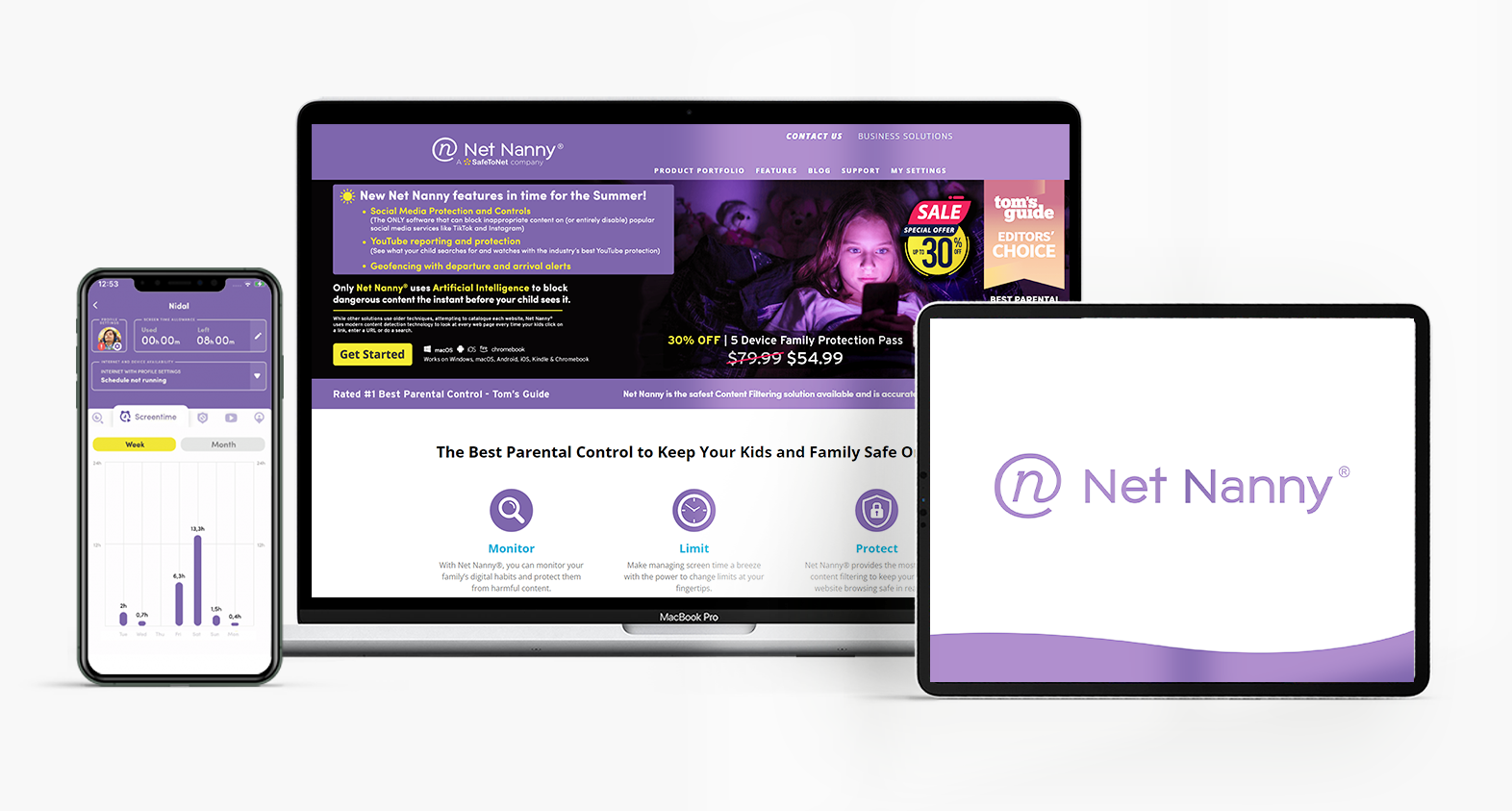
| What Hot? | What’s Not? |
| Effective web filters | No calls & SMS monitoring |
| Support iOS & Android OS | Loops in Android monitoring |
| App advisor for child friendly app recommendations | Bit pricey |
| App blocker | |
| 14-days free trial |
Revisiting Net Nanny in 2024 has been a pleasant experience, as the app sticks to its motto of monitoring, limiting and protecting children’s devices. The web filtering capabilities of Net Nanny continue to stand out, providing a nuanced approach to content filtering that allows users to be more discerning.
One aspect that continues to impress is the ability to create filters, enabling the app to sift through content and block only the inappropriate material. This feature is particularly valuable for parents with children using different device types, as Net Nanny ensures a consistent experience across both Android and iOS platforms—a rarity in the world of parental control apps.
During my Net Nanny parental control review, the App Advisor feature stood out once again. It felt like having a virtual nanny, offering suggestions on which apps to allow or block based on their specific features. The flexibility to restrict content on popular platforms like YouTube and TikTok without blocking them entirely provides a balanced approach to digital parenting.
Downsides to Consider
However, a lingering downside remains—Net Nanny still lacks a call or text monitoring feature. While this limitation may be consistent with other apps on iOS, it creates a loophole that leaves a gap in monitoring for Android users. This absence could be a concern for parents who prioritize comprehensive oversight of their child’s communication.
Pricing Plans
In terms of pricing, Net Nanny continues to offer two subscription plans catering to different device needs. The $54.99/year plan allows management of up to five devices, while the $89.99/year plan extends the coverage to up to 20 devices, offering all exclusive features. For those uncertain about committing to a subscription, the 14-day free trial remains an excellent opportunity to explore the app’s capabilities.
My Stance
It’s an ideal choice for parents whose primary focus is online socialization rather than calls or text messages. The App Advisor feature continues to be a standout, providing valuable suggestions to tailor the digital experience for your child. If the absence of call and text monitoring is not a critical factor for your needs, Net Nanny remains a strong contender in the realm of parental control apps.
Secure Teen – Advanced GPS Free Tracking
|
What Hot? |
What’s Not? |
|
Smart and Strong GPS |
No app blocker |
|
Offline location tracking |
Basic web and screen filters |
|
Free Trial |
Easy screen time by pass |
Revisiting Secure Teen in 2024 has allowed me to reassess its features and functionality. The standout feature that initially impressed me, the smart GPS that provided location access even when the device’s GPS was turned off, remains a unique and commendable aspect of the app.
Limitations Continued
However, my reservations about Secure Teen persist, primarily due to its limitations in offering comprehensive parental control features. While the smart GPS is an excellent addition for location tracking, the absence of an app blocker and the provision of only basic screen and web filtering options continue to be drawbacks. The concern about my children potentially bypassing daily screen limits on their devices remains, posing a significant challenge for ensuring their online safety.
Pricing Plans
In terms of pricing, Secure Teen maintains its two-yearly plans – Premium and Premium Plus. The Premium plan, priced at $39.99 per year, allows management of up to 3 devices, supporting Android, iOS, and PC. The Premium Plus plan, costing $69.99 per year, offers advanced features while managing three devices and supporting Android. The availability of a free trial and a 15-day money-back guarantee provides users with the opportunity to explore the app’s capabilities before committing to a subscription.
My Stance
It may work for parents seeking limited features, it falls short of meeting the demands of those requiring a more comprehensive parental control solution. The app’s simplicity and user-friendly dashboard are notable, but the lack of live support contributes to a sense of being stranded in certain situations.
Web Watcher – Comprehensive Tracking & Monitoring
| What Hot? | What’s Not? |
| Excellent monitoring | No screen time limit |
| Extensive reports | No content filters |
| Easy to use dash board | Not a parenting app |
| Access to chats |
Revisiting WebWatcher in 2024 has allowed me to reassess its features and functionalities. As highlighted in my previous WebWatcher parental control app review, the app continues to excel as a monitoring tool, providing extensive device records and updates, including screenshots of apps like TikTok, Facebook chats, and Tinder.
The simplicity of the location tracking options and the user-friendly interface, including the accessible Dashboard, remain positive aspects of WebWatcher. These features contribute to a straightforward and convenient user experience.
Drawbacks
The significant drawback I encountered during my initial review persists – the absence of content filters and screen time limits. While WebWatcher excels in monitoring, it lacks the tools necessary for ensuring safe content access and managing screen time, which may be crucial for parents concerned about their children’s online activities.
Pricing Plans
The pricing structure remains a challenge, particularly for families with multiple children. WebWatcher supports only one device per subscription, making it less cost-effective for parents with multiple children. Considering the limited features, the individual subscription cost may not align with the budgetary considerations of families seeking comprehensive parental controls.
In terms of pricing plans, the monitoring app starts at $10.83 per month, offering access to multiple monitoring tools. However, it’s essential to weigh the cost against the limited parental control features provided.
My Stance
I do not recommend the app for families with multiple children due to its individual subscription model and the relatively high cost. While it excels as a monitoring tool, families seeking comprehensive parental control features may find more cost-effective options with a broader range of tools and functionalities. It’s crucial to consider your specific needs and budget constraints before opting for WebWatcher as a parental control solution.
Free Parental Controls 2024 You Can Try!
Along with the parental control apps I’ve previously tested, my 2024 top parental app review includes a few free options. These digital parenting apps and tools are helpful on their own to help you protect your child and maximize digital safety.
FamilyLink
FamilyLink by Google has been around for a long time, and many parents love it as a free parental control tool. However, my FamilyLink parental control app review is quite different. If you are looking for a Google-integrated parental control toolkit with basic features like screen time limits and location tracking, then this one is good.
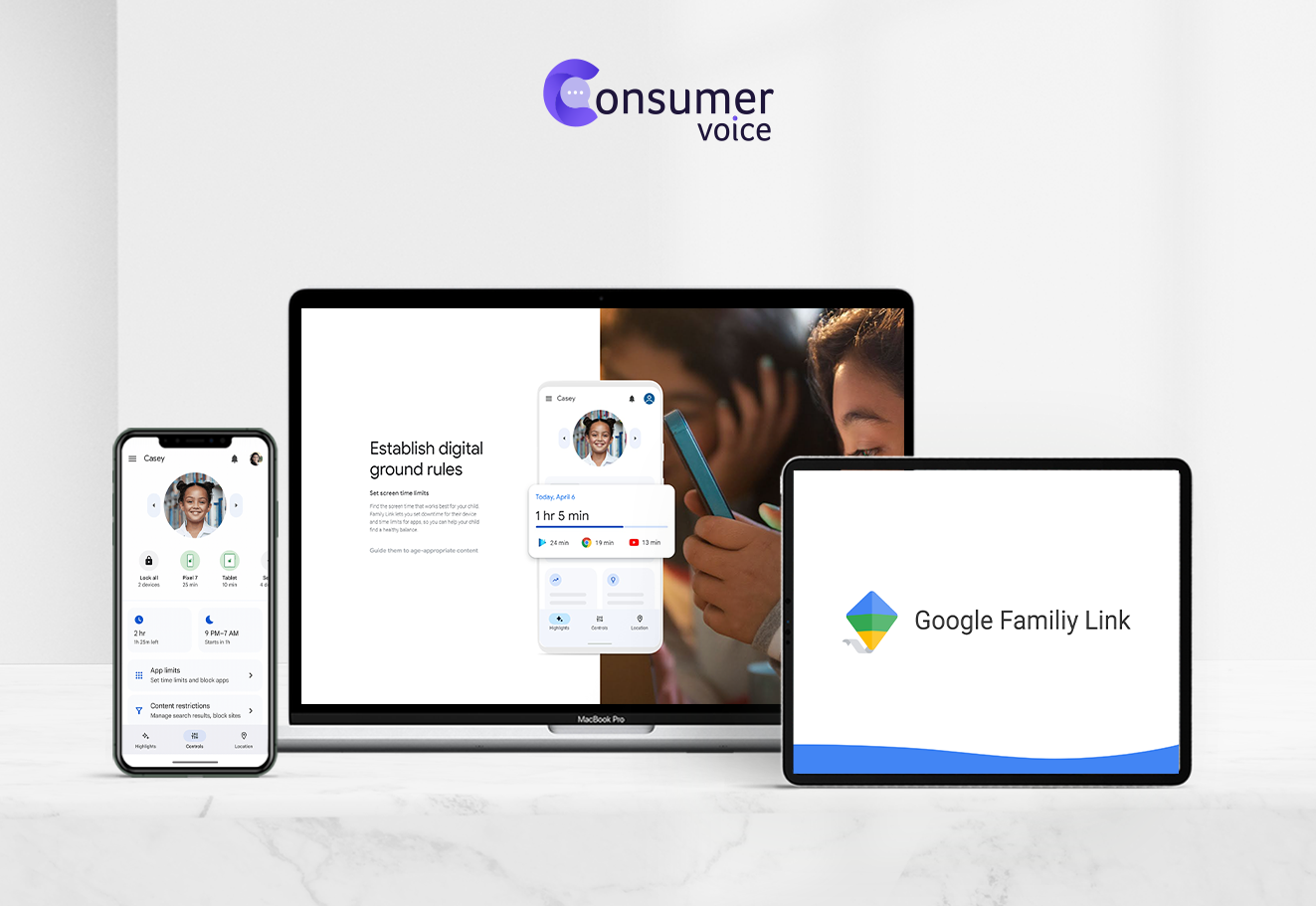
In 2024, Google has transformed the app a lot. Now, it works for content safety and Google product restrictions too. Any Google account added to the FamilyLink app has options and features accessible based on the age limit. An underage user cannot access features and searches like an adult on Google.
Google integrated the account graduation to a regular account at the age of 13; however, it’s still on FamilyLink, and Google will automatically upgrade the account when the child reaches the age of 18. However, the parent can manually remove the child from FamilyLink, and Google will upgrade the account to regular.
From this perspective, I found Google’s FamilyLink a good option to secure your child’s access to digital resources. But testing and exploring the mechanism require a lot of time, so I cannot conclude that FamilyLink will be enough for your digital parenting needs.
Apple Screen Time
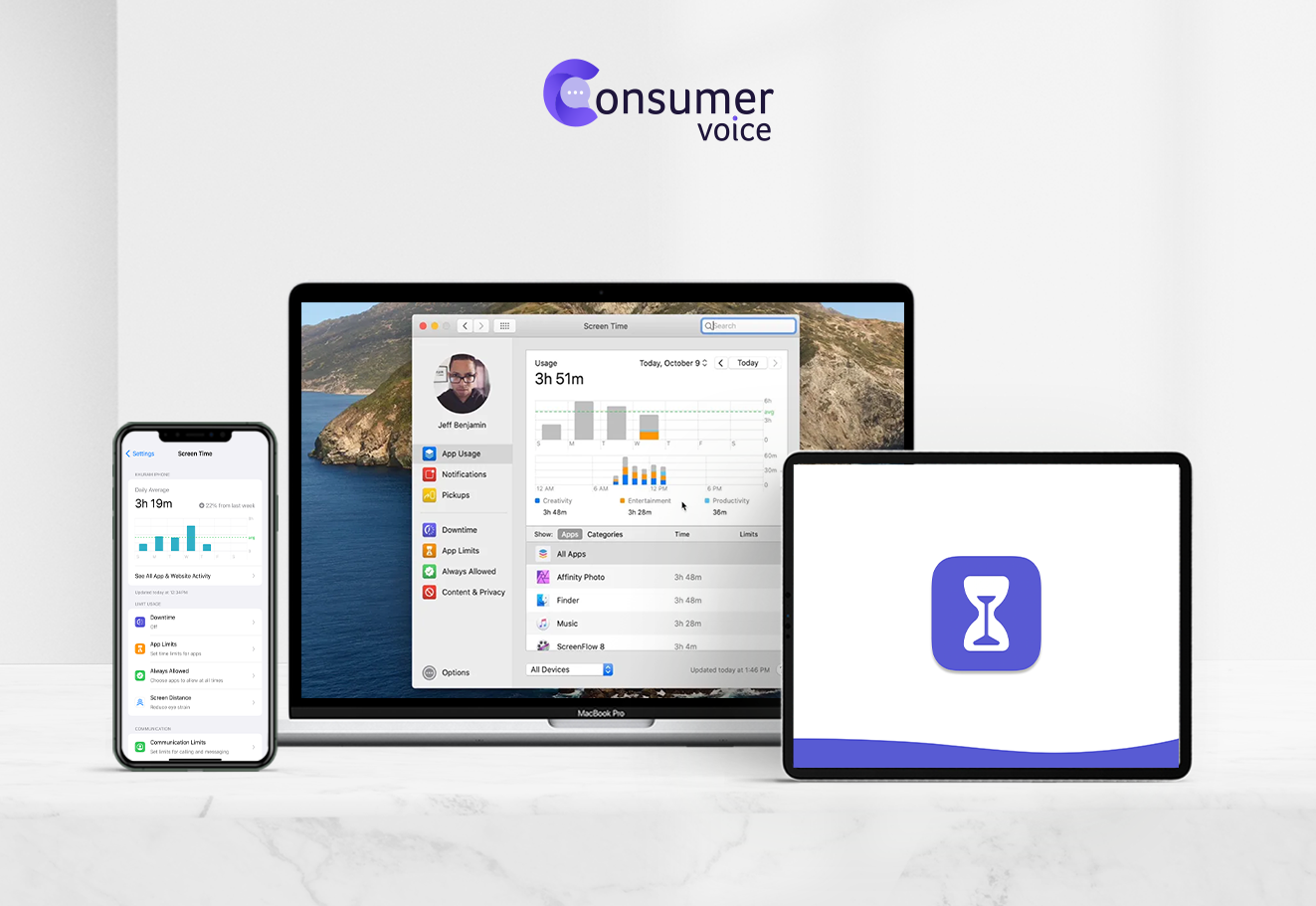
Apple is providing the iOS parental control app feature in its default setup for parental controls on devices as Apple Screen Time. Under the “Family” tab in your iOS device settings, you can find a whole dashboard that helps you create a safer digital space for all your family members. It’s free and always will be. The settings offer you the setup downtime for the devices and set app limits for all the apps your child is using on the device. I found it effective, as many free apps do not offer this feature in parental controls.
Moreover, with Apple Screen Time, you can set up Communication Limits and enable Communication Safety to ensure your child is not communicating with the unknown. The controls let you select the Always Allowed features in the controls to assure what features are always accessible to your child.
One of the smart options I found in Apple Screen Time is the Content & Privacy Restrictions. You can restrict the App Store, iTunes, web browsing, Siri, and Game Center for age-specific searches, games, and interactions. Although it’s pretty extensive, it’s a little too basic. If your kids are geeks like mine, this one is not for you. Older kids can easily bypass these controls with alternative browsing and other hacks. However, for younger kids, it’s quite workable.
Final Verdict!
After reviewing all the best digital parental control apps on the list, I am still giving my vote to FamilyTime to be on the top. As I have been using the app personally, it always amazes me with the best features to keep my kids safe online. It’s not just about safety but building a liaison with my kids using TimeBank and FunTime features.
Additionally, all the new features of FamilyTime are making it even better and accommodating. Though there are other options on the list that have improved their features, suitability and affordability are still with FamilyTime.
Moreover, the Android parental control app FamilyLink and the free iOS parental control app Apple Parental Controls are also options. When you do not want to spend money and are looking for a few basic options because your kids are not geeks, these two options can work for you.
Remember, for advanced options, you must pick the promising app that serves you right. It can help you make the digital space safe for your child and teen adults. Moreover, you can condition them to behave responsibly online.
Frequently Asked Questions
Is it safe to use parental control apps on my child’s device?
Yes, reputable parental control apps are designed with a focus on security and privacy. They often use encryption and secure protocols to protect the data being monitored.
Are free parental control apps good for extensive monitoring?
While free parental control apps can offer basic features, extensive monitoring often requires more advanced functionalities that may be available in premium versions. Free apps may have limitations, such as fewer features or ads.
What are the essential features of a parental control app?
Essential features of a parental control app include content filtering, screen time management, app blocking, location tracking, and real-time monitoring. The ability to customize settings based on your child’s age and needs is also important.
Can I use spy apps instead of digital parenting apps?
It’s not recommended to use spy apps, as they often operate in stealth and invade privacy, potentially causing legal and ethical issues. Digital parenting apps are designed to promote open communication and trust between parents and children. They focus on monitoring and managing online activities while respecting privacy boundaries.
For how long can I use FamilyTime for free?
The specific terms of free usage for FamilyTime may vary, and it’s advisable to check the app’s official website or contact their customer support for the most accurate information. Free trials or limited free versions are common, but certain features may be restricted in the free version, and a premium subscription may be required for full access.
COMPARE SPECS
The Best Parental Control Apps for Your Phone
Latest Parental Control App Reviews
5 Ways Parental Control Apps Offer More Than Just Digital Parenting
Being in the middle of Generation Z and Alpha, as parents, you have an additional parenting role: digital parenting. The digital devices accessible for kids earlier than expected.
Make Your Child’s Browsing Safer with Internet Filters
Interaction of children with technology is pretty frequent and obvious these days. Using internet filters for your Child’s online safety is crucial in the current state of technology.
FamilyTime vs Qustodio
Read through a hands-on comparison of the best-performing parenting apps in the industry: FamilyTime and Qustodio. It helps you in selecting the best parental control app for your child’s safety.
Tricks to Monitor Your Child’s Social Media to Prevent Cyber Predation
Cyber predators are opportunistic threats looking to manipulate children with false information, posing risks to their digital, psychological, and even physical well-being.
Top 5 Digital Parental Controls You Should Use!
Children are becoming isolated due to excessive digital activities and device interactions, use the best digital parental controls to bring a balance in their digital life.
Teaching Your Kids Offline Safety Protocols – The Need for Geofence
Investing in your child’s digital safety is crucial, both online and physical safety are equally important. Normally, offline threats are often more dangerous than online ones.
Tools That Helps You Block Your Child’s Access to Inappropriate Content
When there is a free flow of information and open access to everything, your child can access explicit or inappropriate content easily, it’s crucial to be proactive and get the right parental controls.
FamilyTime Vs FamiSafe
FamilyTime Vs FamiSafe makes your selection of the best parental control app easier. Both of these are the top-rated apps with their significant features and exclusivities.
FamilyTime vs. Secure Teen
Comparing the best parental control apps and finding the most competitive, we’re talking about FamilyTime vs Secure Teen. These two are competitive and strong apps for digital monitoring.
FamilyTime vs mSpy
At a glance, you can see that FamilyTime and mSpy are quite different; both have their exclusivities. The base difference is in their functioning and purpose.
